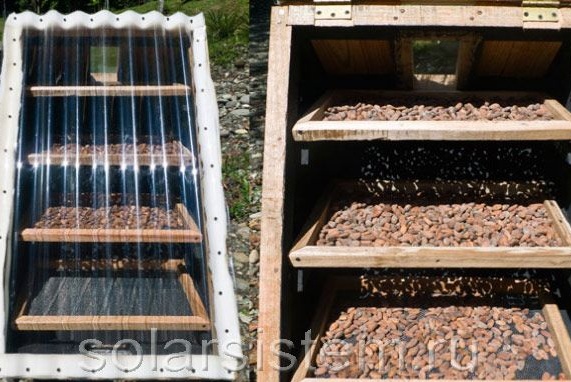
People who harvest dried vegetables, fruits, nuts, herbs, seeds and other things know how complicated this process is. It is not enough just to lay out the supplies on a baking sheet and wait until they are dried, you must constantly watch that they are not spoiled by insects, birds did not eat. In addition, it is important to control weather conditions, and in case of rain, immediately remove the food. Therefore, the author decided to facilitate this process by creating the simplest solar dryer.
The materials that the author used to create the simplest design of a solar dryer for vegetables and fruits:
1) wooden bars 50 to 50 mm
2) plywood sheets
3) metal plate
4) mosquito net
5) transparent slate
6) metal profile pipes
Consider the main stages of creating this model of an oven.
The author wanted to create the lightest design of a solar-powered fruit dryer, but it should reliably cover food from birds and insects. In fact, the dryer will be an ordinary cabinet with transparent doors, which should be directed towards sunlight.
The length and width of such a cabinet depends only on how much you want to put in it products for drying.
Based on his needs, the author chose the size of the cabinet. The author made the main frame of the dryer from 50 to 50 mm wooden beams.
These photos show how the outline of the drying cabinet was assembled:
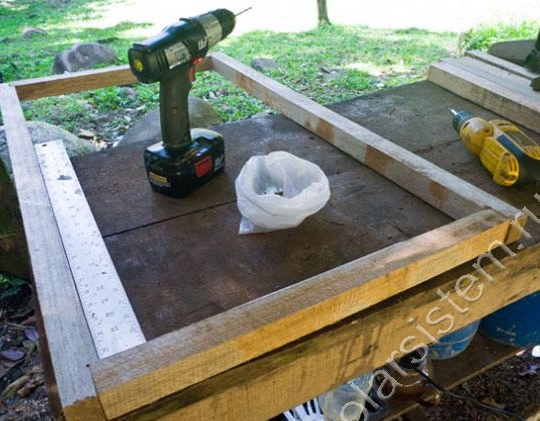
Three of these circuits were needed, and one of these circuits will serve as the door of the drying chamber.
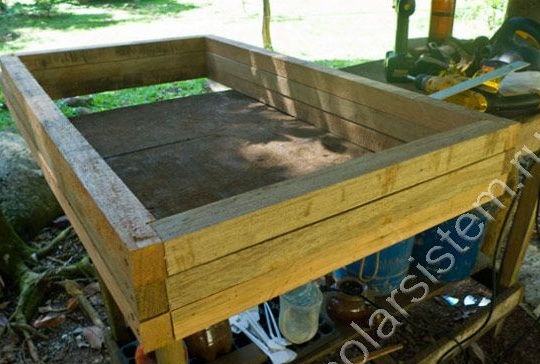
Further, the author proceeded to the manufacture of a drying cabinet box. To do this, all the contours were assembled in one single frame, which will subsequently be studded with plywood.
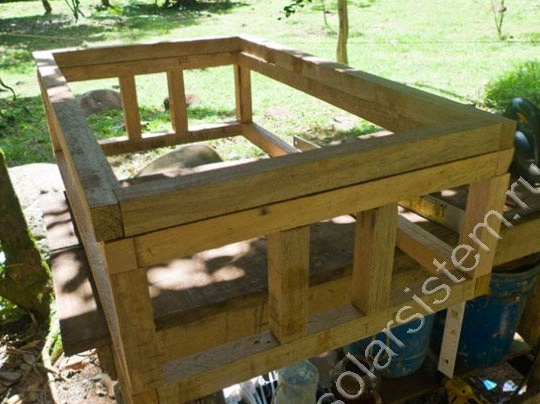
It is important to note that the dryer will be located at right angles to the sun, so the cabinet shelves will be made at an angle. This angle depends on the territorial location and season, which determine the position of the sun above the horizon. The easiest way to calculate this angle in practice. To do this, you need to observe the shadow of the frame, which will be installed under the rays of the sun. When tilting the frame, you need to make sure that the shadows from the two contours converge into a single one, after which you can attach a level to the side wall of the frame and make marks for the location of future shelves.
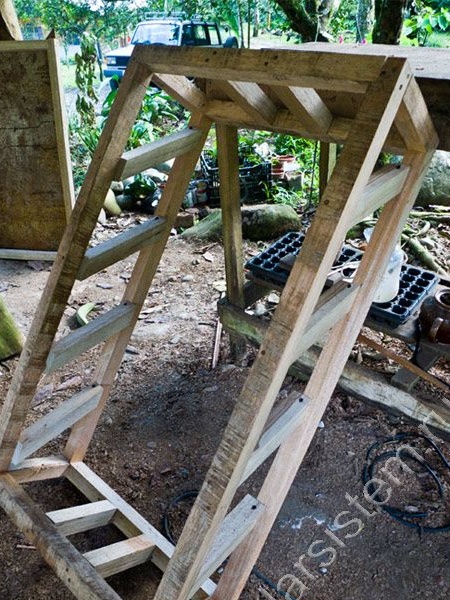
In order to close the back and side walls of the cabinet, the author decided to use plywood 10 mm thick. In order to heat the cabinet faster, the author attached a thin sheet of metal to the back wall. In the upper part of the cabinet, as in the lower, holes were made that are necessary for ventilation of air inside the drying chamber.
In order to prevent insects from penetrating through these openings and not spoiling the drying supplies, the author qualitatively closed the openings with a mosquito net with minimal cell sizes.
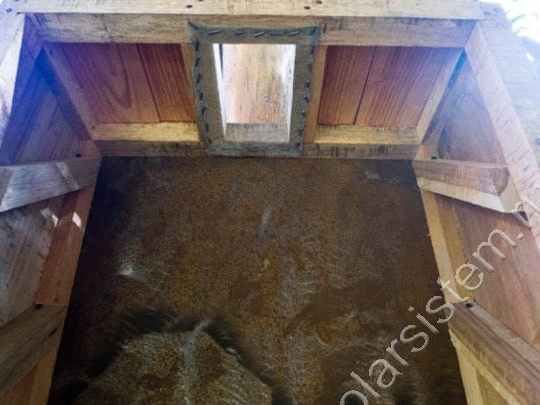
Also, in order to create a greenhouse effect inside the dryer, due to which drying will occur more rapidly, the author painted the inside of the cabinet black.
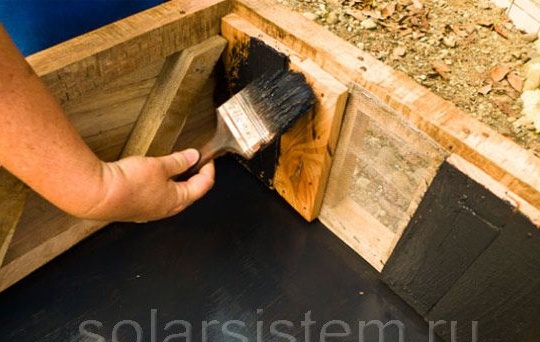
Since the front wall of the cabinet must be transparent, honeycomb carbonate, glass or, as in this case, transparent slate is suitable for it.
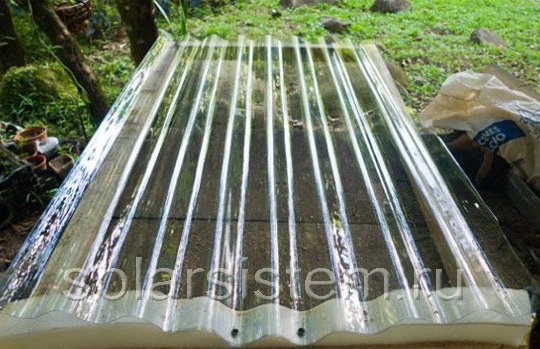
In principle, this dryer can already be used for its intended purpose, it is enough to lean it against any object so that the transparent surface of the cabinet is at the right angle to the sun. However, the author decided to improve the design by installing metal pipes on the sides, which will allow you to adjust the angle of the cabinet without additional items.
For this, conventional profile pipes were used, one pair shorter than the other. The pipes were attached symmetrically to the sides of the drying chamber.
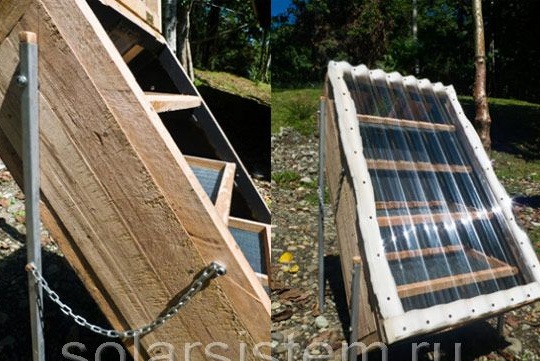
The baking sheets themselves, on which vegetables, fruits and other supplies that need to be dried, will be placed, the author made from the same mosquito net with which the ventilation openings were closed. Using a mosquito net allows air to circulate freely inside the drying chamber.
And so the dryer is assembled and ready for use. The principle of its operation and use is as follows: passing through the transparent surface of the front wall of the dryer, the sun's rays fall on the rear metal wall, the metal plate heats up and heats the air inside the drying chamber to 50 ° C, thus speeding up the drying of vegetables and fruits laid out on trays inside cameras. To ensure that the supplies are not moldy, air circulation is organized as follows: warm air coming out through the upper air vent takes away the extra flag, and a new portion of cold air enters through the lower air vent.
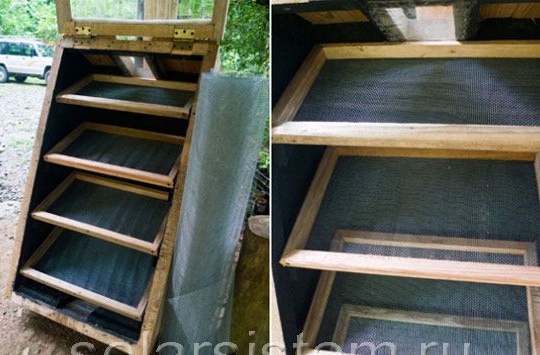
Due to the high temperature inside the drying chamber, excellent ventilation and reliable protection against birds and insects, the harvesting of products is much more comfortable.
